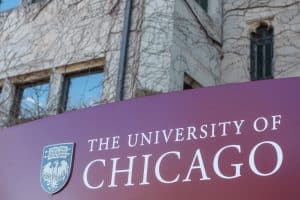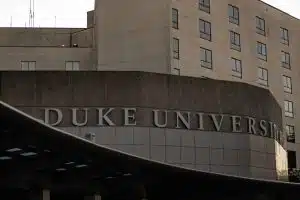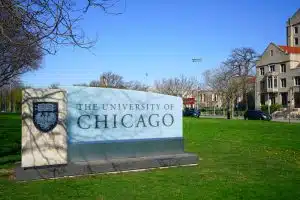UChicago Endowment
The University of Chicago, often called UChicago, is widely recognized for its vast intellectual contributions and groundbreaking research. However, its impressive endowment is another essential component that anchors the university’s operations, student aid, and research initiatives. Here, we delve into the intricacies of UChicago’s endowment and understand its role in university functioning.
Understanding the Concept of University Endowments
The Role of Endowments in Higher Education
Before delving into the specifics of UChicago’s endowment, it’s crucial to grasp the broader concept of university endowments. These are essentially funds the university receives from donations, which are then invested for long-term growth. The returns realized from these investments play an integral part in sustaining and furthering the goals of the educational institution.
University endowments have a rich history that dates back centuries. The concept of endowments can be traced back to medieval times when wealthy individuals and organizations would donate land or money to support the establishment of educational institutions. These early endowments were often tied to religious institutions and were intended to ensure the perpetuity of knowledge and learning.
Over time, the purpose and scope of university endowments have evolved. Today, endowments serve as more than just a financial safety net. They have become the economic backbone of most higher education institutions, providing stability and resources to support their missions and visions.
Endowments are crucial in maintaining universities’ commitment to academic excellence, research breakthroughs, sustainability initiatives, and more. They allow universities to invest in cutting-edge research facilities, attract and retain top-tier faculty, and provide scholarships and financial aid to deserving students.
How Endowments Support University Operations
Endowments provide a steady stream of revenue that universities can rely on, as they are designed to keep the principal amount intact while using the investment earnings for various purposes. This financial mechanism allows universities like UChicago to plan long-term strategies without worrying about immediate financial pressures.
Most importantly, endowments support university operations such as faculty salaries, scholarships, facility maintenance, research, and public service initiatives and often ensure financial aid to students. Faculty salaries are a significant expense for universities, and endowments help ensure that professors are compensated competitively, attracting the best talent in their respective fields.
Endowments also play a crucial role in supporting research activities. They provide funding for groundbreaking research projects, allowing faculty members and students to explore new frontiers of knowledge. This research contributes to the advancement of various disciplines and enhances the university’s reputation as a center of innovation and intellectual curiosity.
Furthermore, endowments enable universities to maintain and upgrade their facilities. From state-of-the-art laboratories to modern classrooms and libraries, these investments create an environment conducive to learning and academic excellence. Endowments also support the upkeep and preservation of historic buildings, ensuring that the university’s architectural heritage is preserved for future generations.
Public service initiatives are another area where endowments make a significant impact. Universities often engage in community outreach programs, providing educational resources and support to underserved populations. Endowments help fund these initiatives, allowing universities to make a positive difference in society beyond their campus walls.
A substantial endowment ensures that a university can continue offering high-quality education and services to its students and society. It provides the financial stability needed to weather economic downturns, adapt to changing educational landscapes, and invest in the future. University endowments are a testament to the enduring commitment of donors, alums, and supporters who believe in the power of education to transform lives and shape a better world.
The History of UChicago’s Endowment
Early Years and Initial Funding
The history of UChicago’s endowment dates back to the university’s initial funding. John D. Rockefeller, the renowned American oil industry tycoon, provided a significant part of the initial endowment, setting off a legacy of financial stewardship guarding UChicago’s educational ambitions.
Rockefeller’s generous contribution laid the foundation for the university’s financial stability and established a tradition of philanthropy that continues to shape UChicago’s future. With his support, the university was able to attract exceptional faculty, develop state-of-the-art facilities, and create an environment conducive to groundbreaking research and intellectual exploration.
As the university embarked on its journey, the endowment served as a crucial resource, enabling UChicago to offer scholarships, fund research initiatives, and support various academic programs. This early funding set the stage for the remarkable growth and success that UChicago would achieve in the years to come.
Throughout the years, additional gifts and prudent financial management allowed the endowment to grow, thus marking a rich historical legacy of financial strength behind the academic excellence that UChicago is recognized for today.
Growth and Expansion Over the Years
Over the decades, UChicago’s endowment has seen robust growth and expansion. The investment strategies and policy changes implemented over time have played an instrumental role in this endowment growth.
Recognizing the importance of diversification, UChicago’s investment team has diligently sought opportunities across various asset classes. By carefully allocating funds to stocks, bonds, real estate, and alternative investments, the university has been able to mitigate risk and maximize returns, ensuring the long-term sustainability of the endowment.
Besides attracting significant donations from corporate bodies and alums, the university has made considerable headway in increasing its endowment through a disciplined investment approach, ensuring a sound financial base for its endeavors.
Furthermore, UChicago’s commitment to responsible investing has yielded financial gains and aligned with the university’s values. By incorporating environmental, social, and governance (ESG) factors into their investment decisions, UChicago has demonstrated its dedication to sustainability and ethical practices.
The growth of the endowment has had a profound impact on the university’s ability to attract and retain top-tier faculty, support groundbreaking research, and provide students with unparalleled educational opportunities. It has allowed UChicago to invest in cutting-edge technologies, expand its global reach, and foster an environment of intellectual curiosity and innovation.
The Structure of UChicago’s Endowment
Investment Strategies and Management
Like many other universities, the University of Chicago’s endowment is managed by a dedicated team of financial experts. This team is responsible for devising investment strategies that best serve the university’s long-term objectives.
Reinvestment of returns and a prudent distribution policy have been critical in maintaining and growing UChicago’s endowment. The financial experts carefully analyze market trends and economic indicators to make informed investment decisions.
They consider diverse investment options, including stocks, bonds, real estate, and alternative investments such as private equity and hedge funds. The team aims to mitigate risks and maximize returns by diversifying the endowment’s portfolio.
Additionally, careful risk balancing and due diligence are crucial to the investment strategy, ensuring a stable revenue stream while guarding against market volatility. The team regularly monitors the performance of the endowment’s investments and adjusts the portfolio as needed to optimize returns.
Allocation of Funds
The allocation of UChicago’s endowment funds spans various sectors of the university’s operations. Given the university’s rich tradition in research and academia, a significant portion of the budget allocation goes toward faculty support and research work.
Ample funds are also reserved for student aid to further the university’s commitment to equality in education. The university believes financial barriers should not hinder talented students from pursuing their academic goals. Scholarships, grants, and work-study programs are funded through the endowment to ensure that deserving students have access to quality education.
Furthermore, part of the endowment funds are utilized for infrastructure, maintaining an enabling environment for learning and discovery. The university continuously invests in state-of-the-art facilities, libraries, laboratories, and technology to provide students and faculty with the resources they need to excel academically.
In addition to faculty support, student aid, and infrastructure, the endowment supports various initiatives and programs that enhance the university’s impact on society. This includes funding for interdisciplinary research, community outreach projects, and collaborations with other institutions.
Overall, the careful allocation and management of UChicago’s endowment funds contribute to the university’s financial stability, academic excellence, and commitment to social responsibility. By strategically investing and distributing its resources, UChicago thrives as a leading research, education, and innovation institution.
Impact of UChicago’s Endowment on the University
Supporting Scholarships and Financial Aid
One of the most visible impacts of UChicago’s endowment is seen in its student aid program. With tuition fees rising nationwide, scholarship and financial aid offerings have become essential for equitable access to higher education.
Due to financial constraints, UChicago’s substantial endowment ensures no deserving student is withheld from a quality education. This has been particularly impactful in attracting diverse students from varying socioeconomic backgrounds, enhancing the inclusivity and diversity of the university’s student body.
The endowment supports scholarships and financial aid beyond just covering tuition fees. It also provides funding for textbooks, housing, and other necessary expenses that can burden students. By alleviating these financial pressures, UChicago’s endowment enables students to entirely focus on their studies and extracurricular activities, fostering a vibrant and engaged campus community.
Funding Research and Faculty Positions
Endowments also play a crucial role in funding research and faculty positions at UChicago. Given the university’s rich legacy in creating knowledge, its endowment allows it to continuously invest in pioneering studies across various disciplines – from the social sciences to the natural sciences, humanities, and the medical field.
Furthermore, the endowment’s financial strength allows it to attract and retain high-profile professors, further elevating its stature as a leading global university. This investment in research and faculty translates into groundbreaking discoveries and fosters a vibrant intellectual community.
The impact of the endowment on research goes beyond just funding individual projects. It also supports the infrastructure necessary for cutting-edge research, such as state-of-the-art laboratories, advanced equipment, and access to extensive research databases. This enables UChicago faculty and students to push the boundaries of knowledge and contribute to advancements in their respective fields.
In addition to funding research, UChicago’s endowment also supports faculty positions. This allows the university to attract top scholars and experts in various fields with a wealth of knowledge and experience. These faculty members contribute to the university’s academic excellence and serve as mentors and role models for students, inspiring them to pursue their intellectual passions.
UChicago’s Endowment in Comparison
Comparing with Other Ivy League Endowments
When compared to the endowments of other Ivy League schools, UChicago’s endowment stands out significantly. While each university differs in its investment strategy and revenue allocation, the overall size of UChicago’s endowment ranks high among its peers, reflective of its financial strength and continued pursuit of academic brilliance.
UChicago’s endowment, which currently stands at over $8 billion, places it in the top tier of Ivy League institutions. This substantial financial resource allows the university to support various initiatives, including faculty recruitment, student scholarships, research grants, and development of state-of-the-art facilities. With such a robust endowment, UChicago can attract top-tier faculty and students, fostering a vibrant intellectual community that thrives on innovation and collaboration.
Furthermore, UChicago’s endowment growth has been remarkable over the years. The university has consistently increased its endowment through prudent investment strategies and a commitment to long-term financial sustainability, ensuring a stable and secure future for future generations. This growth has enabled UChicago to expand its academic programs, establish new research centers, and provide unparalleled resources for students to pursue their intellectual passions.
Understanding the National Average
Comparing UChicago’s endowment with the national average further underscores its solid financial position. With over ten times the national average endowment per student, UChicago remains in a stable place to foster excellence, enhancing its world-renowned reputation for academic superiority while driving future growth and promoting diversity.
The national average endowment per student for private universities in the United States is approximately $100,000. In contrast, UChicago boasts an impressive endowment per student of over $1 million. This significant difference in financial resources allows the university to provide an unparalleled educational experience, ensuring students have access to cutting-edge research opportunities, state-of-the-art facilities, and a wide range of academic and extracurricular programs.
Moreover, UChicago’s substantial endowment allows the university to offer generous financial aid packages to students from diverse socioeconomic backgrounds. This commitment to accessibility and affordability ensures that talented students, regardless of their financial circumstances, can pursue their educational goals at UChicago without the burden of excessive student loan debt.
Ready to Navigate the Financial Maze of College Admissions? Let AdmissionSight Guide You.
You’ve just unraveled the complexities of UChicago’s endowment—impressive. But let’s face it: understanding endowments is just the tip of the iceberg when navigating college admissions. From financial aid packages to scholarship opportunities, economic aspects are as crucial as your SAT scores and extracurriculars.
Why leave it to chance?
At AdmissionSight, we don’t just help you craft an impeccable application; we guide you through the financial intricacies that can make or break your college experience. Our expert consultants are well-versed in the economic landscapes of top-tier schools like UChicago, ensuring you’re admitted and well-funded.
What We Offer:
- Personalized Financial Aid Consultation
- Scholarship Search and Application Assistance
- Endowment and Tuition Insight for Various Colleges
Take Action Now for a Brighter Future!
Don’t let financial hurdles deter you from your dream college. Click below to schedule a free consultation with AdmissionSight and take the first step toward a financially secure academic journey.








































